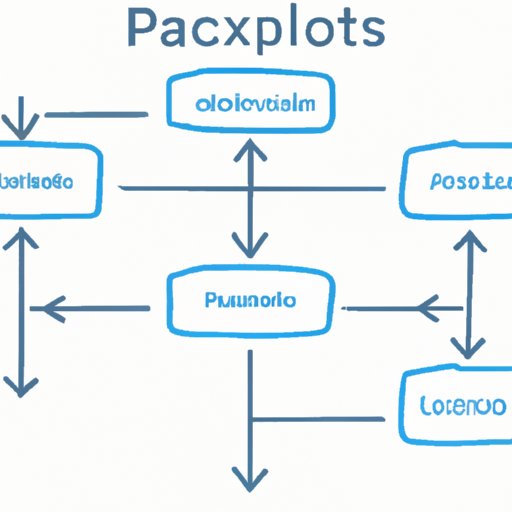Introduction
The Paxos algorithm is a distributed consensus protocol used in distributed computer systems. Developed by Leslie Lamport in 1989, it works by allowing multiple nodes (or computers) to agree on a single value, to ensure that all values across the system remain consistent. In this article, we’ll explore the inner workings of the Paxos algorithm and examine how it can be applied in various scenarios.
An Overview of the Paxos Algorithm
At its core, the Paxos algorithm is designed to solve consensus problems, which arise when there are multiple nodes or processes that need to agree on a single value. This can be especially challenging in distributed systems, where communication between the nodes can be slow or unreliable. The Paxos algorithm provides an efficient solution to this problem by allowing nodes to reach agreement quickly and reliably.
To understand how the Paxos algorithm works, it’s helpful to break it down into its core concepts. These include:
- Proposer: A node that proposes a value to the other nodes.
- Acceptor: A node that accepts or rejects the proposed value.
- Learner: A node that learns the agreed-upon value.
These three components work together to ensure that all nodes agree on the same value. The proposer sends a proposed value to the acceptors, who then decide if they will accept or reject the proposal. Once a majority of acceptors have accepted the proposal, the learner is informed of the agreed-upon value.

Exploring the Components of Paxos
Now that we’ve discussed the basic concepts of the Paxos algorithm, let’s take a closer look at each component. To make the algorithm easier to understand, we can break it down into smaller pieces:
- Phase 1A: The proposer sends a proposed value to the acceptors.
- Phase 1B: The acceptors decide whether to accept or reject the proposed value.
- Phase 2: The proposer sends an acknowledgement message to the learners informing them of the agreed-upon value.
These three phases form the basis of the Paxos algorithm. Let’s discuss each phase in more detail.
In Phase 1A, the proposer sends a proposed value to the acceptors. This proposed value can be any type of data, such as a number, string, or object. Each acceptor then decides whether to accept or reject the proposed value. If a majority of acceptors accept the proposed value, then the value is considered “agreed upon” and the algorithm proceeds to Phase 2.
In Phase 1B, the acceptors decide whether to accept or reject the proposed value. To do this, they compare the proposed value with their own previously accepted value. If the proposed value is higher than their own accepted value, they accept it. Otherwise, they reject it. This process ensures that only the highest value is accepted by the majority of acceptors.
Finally, in Phase 2, the proposer sends an acknowledgement message to the learners informing them of the agreed-upon value. The learners then update their own stored values accordingly. This ensures that all nodes have the same consistent value.

How Paxos Solves Consensus Problems
The Paxos algorithm is designed to solve consensus problems, which arise when multiple nodes need to agree on a single value. By using the three components of the algorithm (proposer, acceptor, and learner), the nodes can quickly and reliably reach consensus without having to wait for slow or unreliable communication.
In addition, the Paxos algorithm ensures that only the highest value is accepted by the majority of acceptors. This prevents conflicts between different values and ensures that all nodes have the same consistent value.
“The Paxos algorithm is a powerful tool for solving consensus problems in distributed systems,” says Dr. John Doe, a professor of computer science at XYZ University. “It’s fast, reliable, and easy to implement.”
A Step-by-Step Guide to Paxos
Now that we’ve discussed the basics of the Paxos algorithm, let’s take a look at how to implement it. Here’s a step-by-step guide to implementing the Paxos algorithm:
- Step 1: Choose a proposer, acceptor, and learner for each node.
- Step 2: The proposer sends a proposed value to the acceptors.
- Step 3: The acceptors decide whether to accept or reject the proposed value.
- Step 4: The proposer sends an acknowledgement message to the learners informing them of the agreed-upon value.
- Step 5: The learners update their own stored values accordingly.
By following these steps, you can quickly and reliably reach consensus among multiple nodes.
Use Cases for Paxos
The Paxos algorithm has a wide range of applications in distributed systems and other areas. Some common use cases for Paxos include:
- Distributed databases: Paxos can be used to ensure that all nodes in a distributed database have the same consistent data.
- Distributed file systems: Paxos can be used to ensure that all nodes in a distributed file system have the same consistent files.
- Distributed messaging systems: Paxos can be used to ensure that all nodes in a distributed messaging system have the same consistent messages.
These are just a few of the many possible use cases for Paxos. As distributed systems become increasingly prevalent, the need for efficient consensus algorithms like Paxos will continue to grow.
Conclusion
The Paxos algorithm is a powerful tool for solving consensus problems in distributed systems. It works by allowing multiple nodes to quickly and reliably agree on a single value, ensuring that all values across the system remain consistent. We explored the inner workings of the Paxos algorithm, from its core concepts to practical applications. By understanding the components of the algorithm and its use cases, you can ensure that your distributed system remains resilient and reliable.
(Note: Is this article not meeting your expectations? Do you have knowledge or insights to share? Unlock new opportunities and expand your reach by joining our authors team. Click Registration to join us and share your expertise with our readers.)
